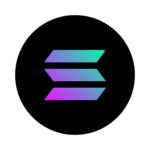XRP is a digital asset built for payments. It is the native digital currency of the RippleNet payment platform, which aims to facilitate instant and cost-effective international money transfers. Unlike many other cryptocurrencies, XRP was created with the specific intention of improving upon the existing banking system rather than replacing it.
The Origins of XRP
XRP was created in 2012 by Ripple Labs Inc., a technology company specializing in the development of payment protocols and exchange networks. From the outset, XRP was designed to work within the financial system to enable quicker, more reliable, and less expensive international transactions.
Key Features of XRP
Speed
XRP transactions are confirmed within seconds, significantly faster than traditional banking systems and even some other cryptocurrencies.
Low Cost
The cost of sending XRP is extremely low, making it an attractive option for transferring value across borders.
Scalability
XRP can handle more than 1,500 transactions per second, which is a higher throughput compared to many cryptocurrencies.
How XRP Works
Unlike Bitcoin or Ethereum, which use blockchain mining, XRP transactions are powered by a consensus algorithm. The XRP Ledger’s consensus process requires validators to agree on the order of transactions, ensuring secure and fast settlement.
The Role of Validators
Validators are responsible for maintaining the network’s integrity by validating transactions and securing the network. Unlike the mining process in other blockchains, XRP’s validators do not receive rewards, contributing to the network’s low transaction costs.
Use Cases of XRP
Cross-Border Payments
RippleNet’s main use case for XRP is as a bridge currency in international transactions, allowing for quick and cost-effective currency conversion.
Micropayments
XRP’s low transaction fees make it well-suited for micropayments, opening up new avenues for monetizing content and services online.
Decentralized Finance (DeFi)
While not its primary focus, XRP is also being explored for various DeFi applications, leveraging its speed and efficiency.
Controversies and Legal Challenges
The SEC Lawsuit
In December 2020, the U.S. Securities and Exchange Commission (SEC) filed a lawsuit against Ripple Labs Inc. and two of its executives. The SEC alleges that they conducted an unregistered securities offering by selling XRP. The outcome of this case is closely watched as it may have significant implications for XRP and the broader cryptocurrency market.
Acquiring and Storing XRP
Purchasing XRP
XRP can be bought on numerous cryptocurrency exchanges using fiat currencies or other cryptocurrencies.
Storing XRP
XRP can be stored in digital wallets, including hardware wallets for added security. When choosing a wallet, it’s important to select one that specifically supports XRP.
Conclusion
XRP stands out in the cryptocurrency space for its focus on integration with the traditional financial system and its aim to improve international money transfers. While its unique position and potential have attracted interest from financial institutions, it also faces legal challenges that could impact its future. As with any cryptocurrency investment, potential users and investors should conduct thorough research and stay informed about ongoing developments.









